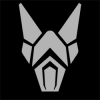You'll be fine with Blender. IMO, it's amazing to have software like that available at no cost.
I'm the type of person that loathes tutorials. In general, I just want to read it, concise and lucid, in text, and then apply it. HOWEVER, when it comes to learning about how to use Blender, the BlenderCookie tutorials are far superior to any textbook. IMO, don't even touch a book, just check out their tutorials.
But I'm only saying this for learning Blender's UI and how to get it to do interesting things (how to make rope/shoe laces, polygonal/subdivision surface modeling, sculpting, rigging/skinning/animation, etc...). Though you could probably learn a lot about how to create art from those tutorials, that's not really what I used them for.
The first thing I ever did in Blender was subdivide the default cube a bunch and started sculpting. I ended up making a troll head, but there was no plan for that. I was just sculpting. I recommend just diving in and making some practice stuff. Don't be too precise and take lots of time (unless things are starting to really turn into something), but instead try to play it quick and loose. Try to move stuff and cram things together so that it looks right. Later on, you'll learn how to do things clean and with more intent. Also, you want to focus on the real "problem" here, getting things to look right. That's what you want to learn.
However, one thing I wish I knew before I started playing with modeling apps was the whole workflow thing. Basically: what is the "big-picture" that you're working towards, where does appX fit in, and will I need an appY, appZ, etc... to finish? I'll explain my workflow with Blender. (Note, people have different workflows, where they do things in their own order and use their own preferred collection of tools)
Say I want to create a high-poly looking character that I can animate and put in a game.
With Blender, I can:
- create a base mesh for the character, apparel, extra parts, etc..
- sculpt it (high-res)
- retopologize it
- transfer my high-res detail to the retopo and touch it up
- bake maps (normal, ao)
- texture it (diffuse)
- create a rig for the model (a collection of bones that have various relationships and constraints with one another)
- skin the model to the rig
- create multiple animations
- export the result (I can also create my own export script in python, to target my game engine directly)
So, Blender is pretty much all you need. In reality, I'll sometimes use sculptris or zbrush for 1-2, but I'll usually use xNormal for 5. In steps 1-2, I'm trying to figure out what the character looks like. In steps 3-5, I'm trying to make it look good, but with far fewer polygons. I'm also arranging my polygons in certain ways, in anticipation for animation. In 6, I'm coloring it. In 7-9, I'm animating it. In 10, I'm done and sending it to the engine. Anyways, that's one example of a workflow.
Just for note, Unity 3D can read .blend files. Basically, do steps 1-9. At 9, remove all the intermediate/beginning stuff from the scene that you don't need. Just keep the final work and the animations. Then, drag and drop the file into Unity. This will create a separate copy of the file that unity will keep in the assets folder (if I remember the names correctly). Want to add an animation? double click the file in Unity, Blender launches, then create your new animations. (when I was playing around with it, there were a couple of small bumps here and there, but it was still pretty smooth and quite usable).









